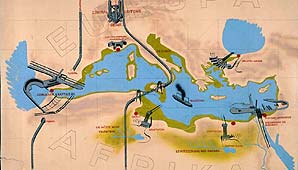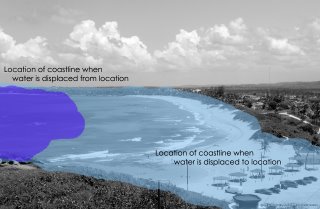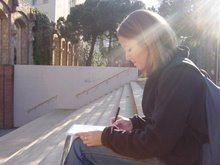
In regards to the specifics of the project, Atlantropa would involve the closure of the Strait of Gibraltar and reduce the Mediterranean Sea by 30 percent. In addition to promoting economic and social integration, the dam would generate hydroelectricity from the 88 cubic meters of water shooting through each second. Through evaporation and the break from the Atlantic Ocean, 3.5 million square kilometers of land would be created as the water level of the Mediterranean drops b
 y 100 meters. It would have a significant effect on the surrounding seaport communities, preventing port operations after a 30 meter decrease. The diagrams below make comparisons based on the new land created and the water displacement.
y 100 meters. It would have a significant effect on the surrounding seaport communities, preventing port operations after a 30 meter decrease. The diagrams below make comparisons based on the new land created and the water displacement.
Water displacement would not only affect surrounding Mediterranean cities, such as Genova, but also cities and communities around the world. The water displaced from the Mediterranean Sea would cause the water to rise 1 meter around the rest of world. Water is a powerful force with the strength to destoy development or completely wipe away land, just as it is being created. The photos below illustrate the possibilities for a port of Genova as well as the effects of water deplacement either to or from region. Who can benefit from reclamation land or even reclamation present structure? To what extent is the displacement of water powerful? How might displacement develop into a Mega Structure?
History of Gibraltar Strait Dam








